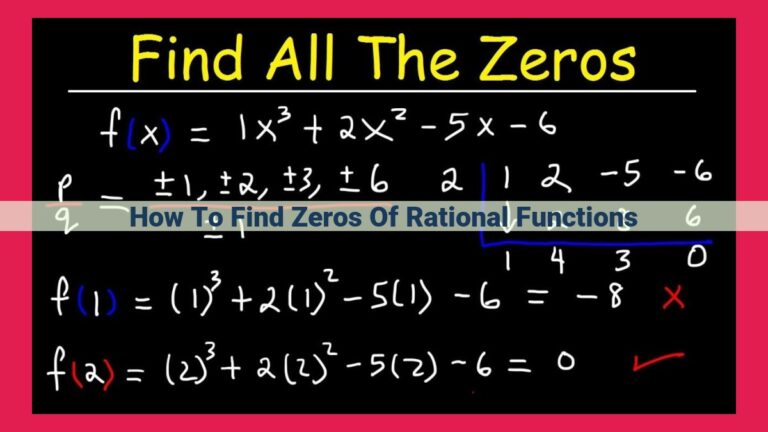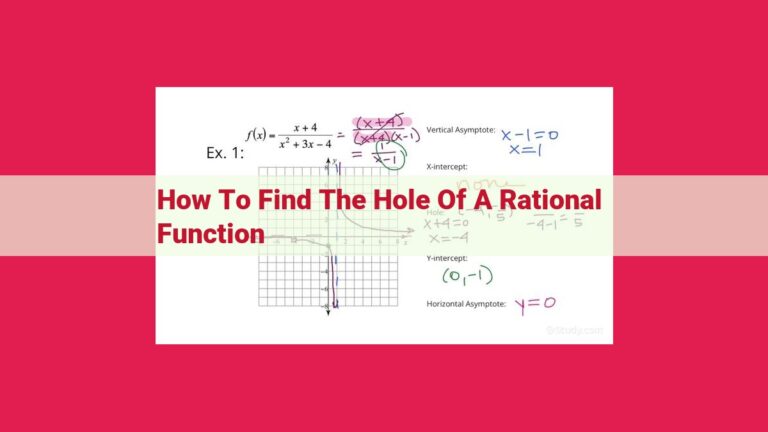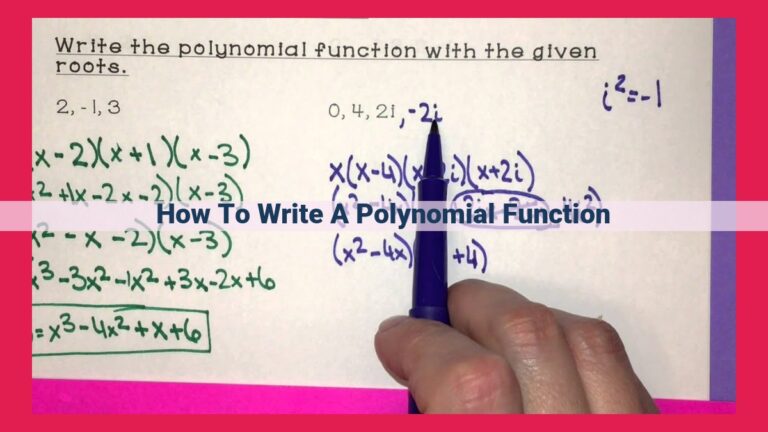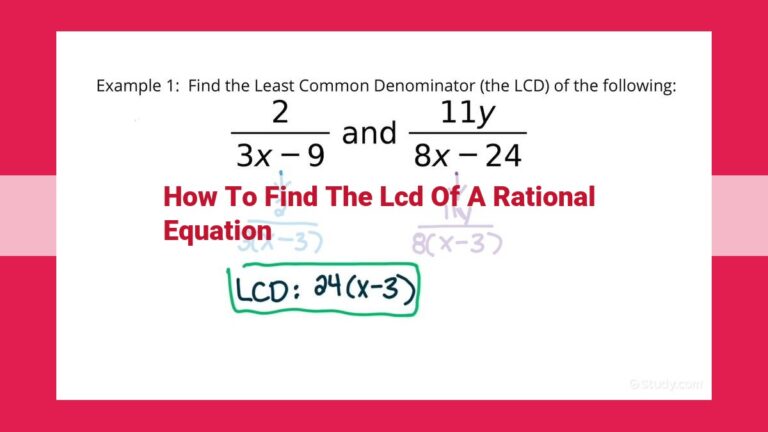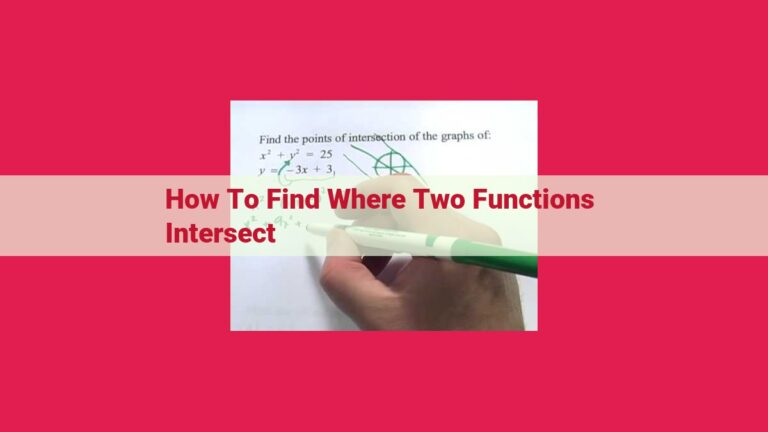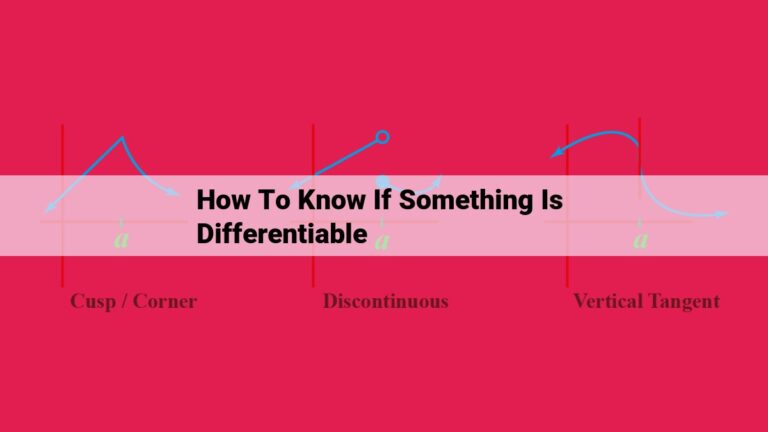Identifying Inverse Functions: Essential Tests And Applications
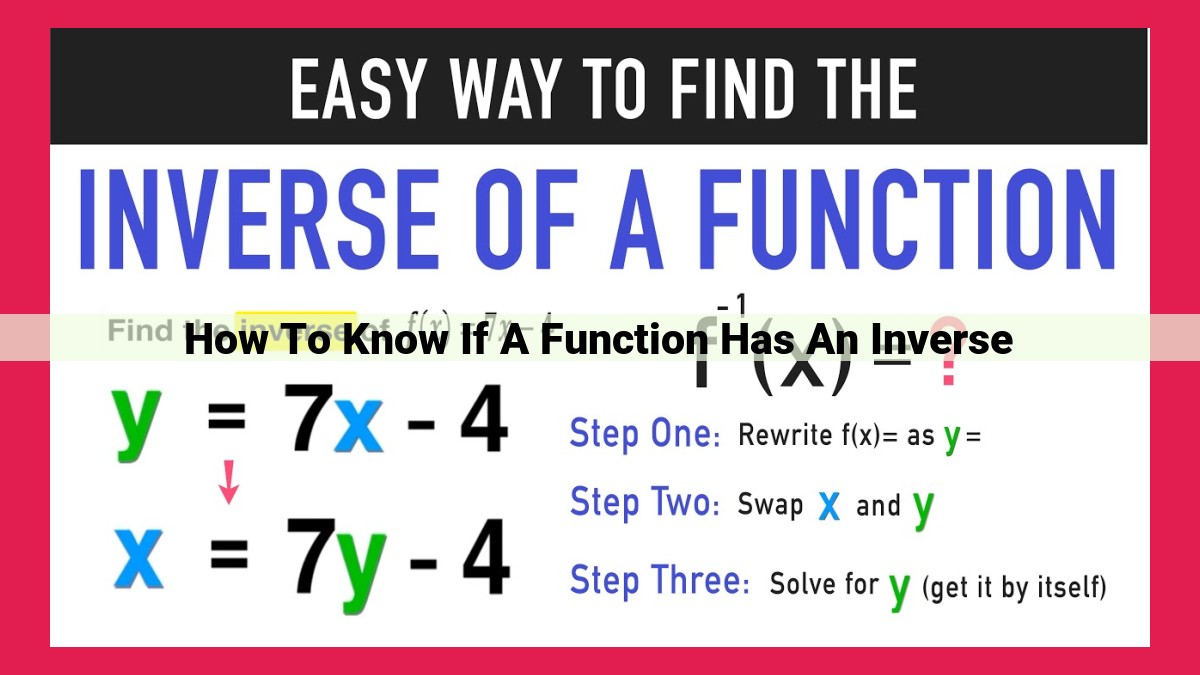
To determine if a function has an inverse, it is essential to understand injective (1-1) functions. The horizontal and vertical line tests are visual methods to check for invertibility. For the horizontal line test, any horizontal line should intersect the graph at most once, while for the vertical line test, any vertical line should intersect the graph at most once. Passing these tests indicates that the function is 1-1, allowing for the existence of an inverse. Inverse functions find applications in various fields, such as cryptography, computer graphics, and equation solving, making their identification crucial in mathematical and real-world contexts.
Understanding 1-1 Functions: The Gateway to Inverse Functions
In the realm of mathematics, functions play a crucial role in describing the relationship between two sets of data. When a function assigns unique output values to distinct input values, it is considered a one-to-one function or an injective function. This “one-to-one” property is the cornerstone for defining inverse functions, a concept that unlocks a world of mathematical possibilities.
A 1-1 function ensures that no two different inputs can have the same output. Imagine a vending machine where each coin inserted corresponds to a unique selection. This is a textbook example of a 1-1 function. Each input (coin) leads to a distinct output (item dispensed). This property is essential because it allows us to uniquely reverse the function, creating an inverse function that maps outputs back to their corresponding inputs.
In other words, 1-1 functions provide a clear and reversible relationship between the input and output values. This one-to-one correspondence is the key that unlocks the door to the fascinating world of inverse functions.
The Horizontal Line Test: A Visual Guide to Inverse Functions
Are you curious about inverse functions but struggling to grasp the concept? Let’s unravel it together using an easy-to-understand method—the Horizontal Line Test.
Imagine you have a function graphed on a coordinate plane. The Horizontal Line Test is a quick visual way to determine if this function has an invertible counterpart. Here’s how it works:
Draw a horizontal line anywhere on the graph. If this line intersects the graph at more than one point, then the function does not have an inverse.
Why is this so? Because an inverse function relates each output value of the original function to exactly one input value. If horizontal lines intersect the graph at multiple points, it means that different input values are mapped to the same output value, violating the uniqueness requirement of an inverse function.
Visualize a scenario where you ask someone a question but receive multiple unrelated answers. It becomes impossible to determine which answer corresponds to your question. Similarly, if a function’s graph intersects horizontal lines at more than one point, it’s like having multiple answers for the same output, making it impossible to define a unique inverse function.
So, remember, for a function to have an inverse, all horizontal lines should intersect the graph at a maximum of one point. If this condition is met, the function passes the Horizontal Line Test and is invertible.
Jump into the world of invertible functions with confidence, and stay tuned for more insights into these fascinating mathematical tools.
Vertical Line Test for Inverse Functions
Understanding the Vertical Line Test:
The vertical line test provides a simple visual method to determine whether a function possesses an inverse function, or whether it is invertible. As its name suggests, this test involves drawing vertical lines parallel to the y-axis to intersect the graph of the function.
Passing the Test:
For a function to pass the vertical line test and thus have an inverse, it is crucial that no vertical line intersects the graph at more than one point. In other words, each element in the domain must correspond to a single element in the range. If this condition is not met, the function is considered non-invertible.
Graphical Explanation:
Imagine a vertical line passing through the graph of a function. If the line intersects the graph at multiple points, it means that the same input (x-value) corresponds to different outputs (y-values). This violates the definition of a function, which requires each input to have a unique output. Therefore, a function that fails the vertical line test will not have an inverse function.
Importance of Invertibility:
The ability to find an inverse function is essential in many mathematical and real-world applications. Inverse functions allow us to reverse the relationship between variables and solve equations for specific values. They are widely used in fields such as cryptography, computer graphics, and solving nonlinear equations.
Unveiling the Power of Inverse Functions: Applications Beyond Mathematics
In our journey to comprehend the enigmatic world of mathematics, we encounter the intriguing concept of inverse functions. These functions possess a unique ability to unravel the mysteries of their parent functions, granting them a special significance in various mathematical and real-world applications.
Cryptography: Unlocking Secrets
Inverse functions are indispensable in the realm of cryptography, where the art of concealing sensitive information takes center stage. By employing mathematical algorithms known as encryption and decryption, cryptographers utilize inverse functions to safeguard data from prying eyes. The process of encrypting a message involves transforming it into a scrambled form, known as ciphertext, using a carefully chosen encryption function. The inverse of this function, known as the decryption function, is then used to unscramble the ciphertext, revealing the original message to the intended recipient.
Computer Graphics: Shaping Virtual Worlds
Within the captivating landscapes of computer graphics, inverse functions play a pivotal role in manipulating and transforming digital objects. They allow artists and designers to smoothly rotate, scale, and distort 3D models with precision. By utilizing inverse trigonometric functions, developers can accurately calculate angles and distances, ensuring the seamless rendering of objects and animations in virtual environments.
Solving Equations: Simplifying the Complex
Inverse functions also provide a powerful tool for solving complex equations. By isolating the independent variable on one side of the equation using algebraic operations, we can determine its inverse function. This inverse function can then be used to find the corresponding value of the dependent variable. For instance, finding the inverse of a logarithmic function allows us to solve equations such as log(x) = 5, revealing the value of x that satisfies the equation.
In conclusion, inverse functions extend far beyond the realm of abstract mathematics. They find practical applications in diverse fields, empowering us to unlock secrets, shape virtual worlds, and simplify complex equations. Their ability to unravel the mysteries of their parent functions makes them an invaluable tool for mathematicians, cryptographers, computer graphics artists, and problem solvers alike.
The Intriguing World of Inverse Functions: Unlocking the Secrets of Invertibility
In the realm of mathematics, the concept of inverse functions plays a pivotal role, serving as a cornerstone for defining inverses and unlocking a plethora of applications. This article delves into the captivating world of inverse functions, providing a comprehensive guide to their intricacies and unveiling their practical significance.
Unveiling 1-1 Functions: The Key to Inverses’ Existence
The journey begins with understanding 1-1 functions, also known as injective functions. These functions possess a unique property: they assign distinct outputs to distinct inputs. This exclusive characteristic is crucial for a function to have an inverse, as it ensures that each input maps to a single, well-defined output.
The Horizontal Line Test: A Visual Gateway to Invertibility
The horizontal line test emerges as a powerful visual tool for determining a function’s invertibility. This test revolves around a simple principle: if no horizontal line intersects the graph of a function at more than one point, then the function passes the test and is thus invertible. In essence, the test asserts that each output value corresponds uniquely to an input value.
The Vertical Line Test: Another Visual Perspective
Complementing the horizontal line test, the vertical line test provides an alternative visual approach to evaluating invertibility. Once again, the test relies on a fundamental criterion: if no vertical line intersects the graph of a function at more than one point, the function passes the test and is deemed invertible. This test ensures that each input value maps to a unique output value, reinforcing the essence of invertibility.
Beyond Theory: The Practical Allure of Inverse Functions
Inverse functions extend far beyond theoretical constructs, finding widespread applications in both mathematics and real-world domains. From deciphering encrypted messages in cryptography to transforming 3D objects in computer graphics, inverse functions play an indispensable role. Moreover, they serve as essential tools in solving complex equations, opening up new avenues for problem-solving.
Exercises and Practice Problems: Unleashing Your Understanding
To solidify your grasp of inverse functions and their properties, we invite you to embark on a series of exercises and practice problems. These challenges will guide you in applying the concepts of horizontal and vertical line tests, honing your ability to identify invertible functions. By actively engaging with these exercises, you will strengthen your understanding and expand your analytical toolkit.
In the intricate tapestry of mathematics, inverse functions emerge as a fundamental concept, unlocking a gateway to deeper comprehension and practical applications. Through understanding the properties of 1-1 functions, applying the horizontal and vertical line tests, and exploring their real-world significance, you gain a powerful tool for navigating mathematical landscapes and beyond. Embrace the challenge of exercises and practice problems to enhance your mastery of inverse functions, unlocking the secrets of invertibility that lie within.
